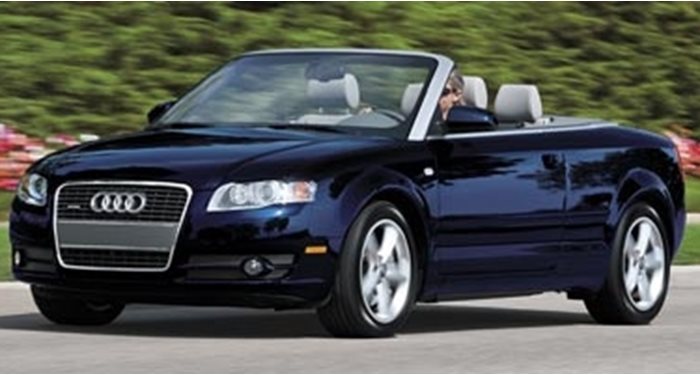Some owners have reported BMW E46 throttle body problems, which could be a major issue, considering that later models employed an electronically actuated throttle body to control everything from idle speed to engine response. These issues are usually resolved by cleaning the throttle body of any accumulated gunk, especially on cars with a prior history of PCV problems, but can also be caused by a poor electrical connection between the throttle body and its wiring harness, and could trigger a P0121 and P0123 error codes in the diagnostic system.
The starting system also appears to be largely trouble-free, with the only BMW E46 starter problems to report revolving around the standard-fit anti-theft system. Either the immobilizer control unit or the coded key could go wrong. In the former case, the only solution is to replace the faulty controller, but in the latter case, there's also a possibility that the ignition key simply needs to be reprogrammed. Some owners also report that the crash sensor, located in the main power line next to the battery in the trunk, could malfunction, which will also cause a no-start condition.
Closely linked to the probable immobilizer issue are problems with the BMW E46's central locking, boot lock, and key, which could point to the same control module. However, there is also a well-known problem with the GM5 module behind the glove box, which controls the locking system. This problem can often be repaired by replacing the some relays inside this module, following which it should be working again.
There are also very few complaints about the charging system, with BMW E46 alternator problems usually only occurring due to corrosion in the alternator, or plain old wear and tear on the internal carbon brushes or regulator. BMW E46 battery problems don't appear to be a notable issue, although some electronic components could cause a slow battery drain due to poor earth connections.
The climate control system appears to be quite robust, and BMW E46 AC and heater problems are usually solved by replacing the cabin air filter or ensuring that the airflow control flaps in the HVAC system are working properly. There don't seem to be any design flaws in the cooling hardware, however, so the AC compressor and heat exchangers shouldn't pose any issues.
Problems with the BMW E46's manual gearbox and clutch are few and very far between, and, because these cars didn't employ a limited-slip differential, they generally don't need any attention, apart from an occasional clutch replacement or perhaps repairing a leaking oil seal.
The brakes are another story, with many owners complaining about BMW E46 handbrake problems. However, it usually turns out that the handbrake was never properly adjusted on those problem cars, with very few cases of owners needing to replace any components to get it to work as it should and the rest eventually getting it right after repeated adjustments.
Very few owners mentioned BMW E46 water leak problems, apart from the engine's cooling-system leaks, that is. Body-related water leaks are usually caused by blocked drainage channels in the sunroof assembly or the roof pillars, and cleaning them out is often a massive mission. However, an unchecked leak could eventually lead to electric problems, as some control modules are located in quite vulnerable areas.
BMW E46 sunroof problems have been mentioned by a number of owners, and the problems usually revolve around the sunroof frame's assembly. Either the drive cable stops working or the tilt-sliding mechanism warps, and both of these faults will cause the sunroof to stop working. The worst bit is that it's a big and costly mission to repair, because half of the interior has to be torn-down to gain access. Consequently, many owners simply stop using the sunroof.
There are no body-specific 2000-2005 BMW E46 wagon problems, but convertible owners often have bad luck. BMW E46 convertible problems can range from wiring issues to position switches in the mechanism, and often include some issue or pressure drop with the hydraulic system that operates the roof.












 Acura
Acura
 Alfa Romeo
Alfa Romeo
 Aston Martin
Aston Martin
 Audi
Audi
 Automobili Pininfarina
Automobili Pininfarina
 Bentley
Bentley
 BMW
BMW
 Bollinger
Bollinger
 BrightDrop
BrightDrop
 Bugatti
Bugatti
 Buick
Buick
 Cadillac
Cadillac
 Caterham
Caterham
 Chevrolet
Chevrolet
 Chrysler
Chrysler
 Dodge
Dodge
 Ferrari
Ferrari
 Fiat
Fiat
 Fisker
Fisker
 Ford
Ford
 Genesis
Genesis
 GMC
GMC
 Gordon Murray Automotive
Gordon Murray Automotive
 Hennessey
Hennessey
 Honda
Honda
 Hyundai
Hyundai
 Ineos Automotive
Ineos Automotive
 Infiniti
Infiniti
 Jaguar
Jaguar
 Jeep
Jeep
 Karma
Karma
 Kia
Kia
 Koenigsegg
Koenigsegg
 Lamborghini
Lamborghini
 Land Rover
Land Rover
 Lexus
Lexus
 Lincoln
Lincoln
 Lordstown
Lordstown
 Lotus
Lotus
 Lucid Motors
Lucid Motors
 Maserati
Maserati
 Mazda
Mazda
 McLaren
McLaren
 Mercedes-Benz
Mercedes-Benz
 Mini
Mini
 Mitsubishi
Mitsubishi
 Nissan
Nissan
 Pagani
Pagani
 Polestar
Polestar
 Porsche
Porsche
 Ram
Ram
 Rimac
Rimac
 Rivian
Rivian
 Rolls-Royce
Rolls-Royce
 Spyker
Spyker
 Subaru
Subaru
 Tesla
Tesla
 Toyota
Toyota
 VinFast
VinFast
 Volkswagen
Volkswagen
 Volvo
Volvo